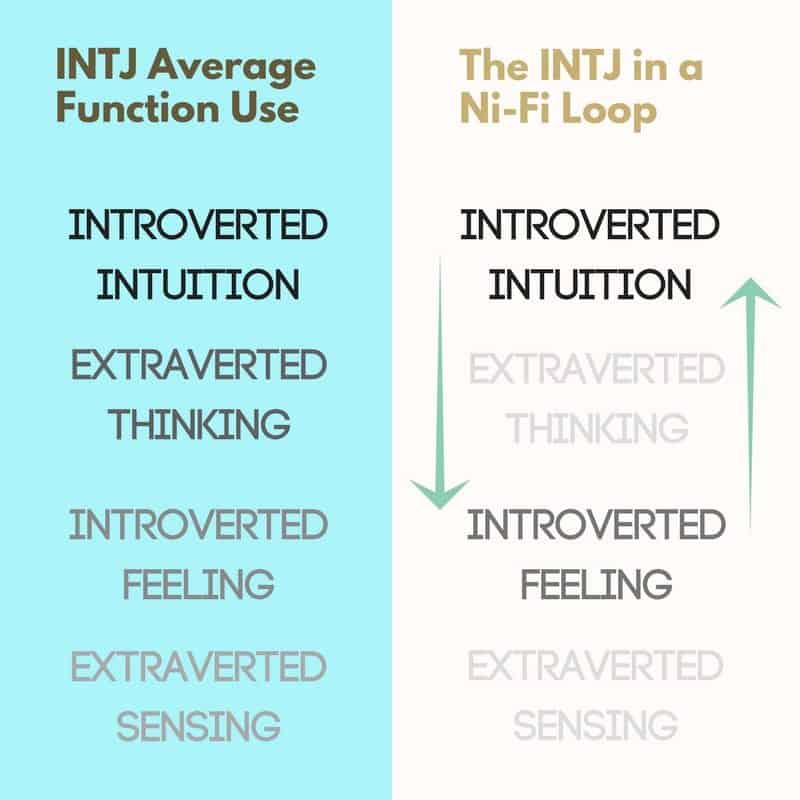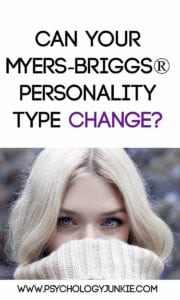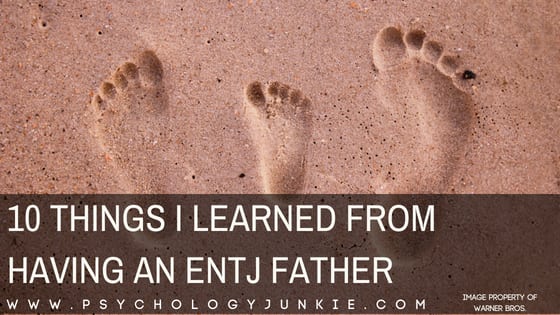Can Your Myers-Briggs® Personality Type Change?
Updated on May 29th, 2021
I get asked every day if someone can change their personality type. I come across people who say “I used to be an INFP, but now I’m an INFJ” or “I’m both an ISFP and an ESFP.” Is this possible? Can you change types or be two types? Let’s find out!

Not sure what your personality type is? Take our new personality questionnaire here. Or you can take the official MBTI® here.
This article contains affiliate links. If you purchase an eBook from one of my links I get a small percentage back to help run my site.
Table of contents
Estimated reading time: 10 minutes
Can Your Myers-Briggs® Personality Type Change Over Time?
According to Myers-Briggs theory, your personality type is inborn, and it doesn’t change. However, the way you exhibit your type WILL change (and should) as you go through life. Why? As you age and mature you develop different facets of your personality type.
Age and Your Cognitive Function Stack
Every personality type has a cognitive function stack. This stack includes four primary functions and four shadow functions – 8 functions total. As you go through life you’ll develop certain functions and enjoy them more than you did at other times in your life.
To explain, let’s use the example of an INTJ. Here is the INTJ function stack:
INTJ Primary Function Stack
Dominant Function: Introverted Intuition (Ni)
Auxiliary Function: Extraverted Thinking (Te)
Tertiary Function: Introverted Feeling (Fi)
Inferior Function: Extraverted Sensing (Se)
Shadow Functions:
Opposing Role: Extraverted Intuition (Ne)
Critical Parent: Introverted Thinking (Ti)
Trickster: Extraverted Feeling (Fe)
Demon: Introverted Sensing (Si)
When I took my MBTI® certification course I learned that the functions in our type mature at different periods of our lives. From birth to about age 7, the dominant function develops. So a very young INTJ would be wholly immersed in developing introverted intuition. We might not see much thinking, feeling, or sensing at a young age (although they would still be in use, just underdeveloped).
From 7 to age 20, the auxiliary function develops (as the dominant function continues developing). So at this age, we would see thinking start to develop more. The INTJ would become more objectively logical with their intuitions, more decisive, and organized.
During the 20s, 30s, and 40s, the tertiary function develops (as the dominant and auxiliary function continue developing). The INTJ would now start to become more concerned with discovering their individual ethics.
During the 50s, 60s and onward the inferior function (extraverted sensing) develops as the other functions continue developing. The INTJ would now be more tuned into the present, more detail-oriented, fonder of living in the moment and taking advantage of current opportunities.
How Age Impacts Your Perceived Personality
When I was doing my training to become an MBTI® practitioner, we were taught about how the different functions in our personality type evolve and grow throughout life.
If you are an introvert (like the INTJ we just discussed), you might feel more extraverted as you develop Extraverted Thinking or Extraverted Sensing. If you’re an extravert, you might feel more introverted as you develop your introverted functions. If you’re a sensor you might feel more connected to intuition as you develop intuition. If you’re intuitive you might feel more connected to sensing as you develop sensing. If you’re a thinker you might feel very in tune with feeling as that function develops, and vice versa.
So you may “feel” like a different type at different ages as you develop the lower functions in your stack. All the same, your dominant function will still be your dominant. No other function will have quite as much conscious power as that function. In the same way, your inferior will remain inferior, your auxiliary will remain in the support role, and your tertiary will remain the third-most potent function in your stack.
Here’s another example in case it’s still confusing. This time, we’ll use the ESFP as an example. Here is their primary function stack:
Dominant Function: Extraverted Sensing (Se)
Auxiliary Function: Introverted Feeling (Fi)
Tertiary Function: Extraverted Thinking (Te)
Inferior Function: Introverted Intuition (Ni)
Let’s imagine that we’re working with a 35-year-old ESFP. At this point in his life, he’s developing Extraverted Thinking, because that’s his tertiary function. He takes the Myers-Briggs® test and shows a strong preference for thinking because he’s really delving into that function right now. But when he reads the type descriptions he also feels a strong connection to the ESFP type. Which one is he? Is he a thinking type? Or is he an ESFP? Is he both? After more research, he realizes he identifies more with ESFP.
Confusion like this happens a lot, and it’s one of the reasons why learning about the cognitive functions is so important. If you know which functions you identify with and rely on more, then that will help you to define your type much more accurately than a simple test will.
How Dominant-Tertiary Loops Impact Your Perceived Personality
Dominant-tertiary loops occur when we bypass our auxiliary function and loop back and forth between our dominant and tertiary functions. There’s a strong temptation for all of us to enter these loops because the tertiary function has the same attitude as the dominant function.

What’s an attitude?
If you’re an introvert, your dominant and tertiary functions will be introverted.
If you’re an extravert, your dominant and tertiary functions will be extraverted.
Extraversion and introversion are attitudes. One’s energy flows inward (introversion), and the other’s energy flows outward (extraversion).
Why Do We Want to Enter Loops?
If you’re an introvert, you’ll always gain the most energy from remaining in the introverted attitude. If you’re an extravert, you’ll always gain the most energy from remaining in the extraverted attitude. The auxiliary and inferior functions can drain us sometimes because they have a different attitude than we prefer. For example, as an INFJ I often feel tempted to immerse myself wholly in intuition and thinking, because they’re both introverted for me (INFJs have introverted intuition and introverted thinking). Sometimes I don’t feel like embracing extraverted feeling (my auxiliary function) because it’s in my non-preferred attitude and doesn’t feel as “me” as intuition and thinking do. So if I get stuck in an intuition-thinking loop I might test as INTP or INTJ instead of INFJ. Or I might decide that I’m an INTJ and an INFJ (I’ve seen people do this).
But am I really two types? No. I’m just bypassing my auxiliary function and looping back and forth between intuition and thinking. Usually, this results in stunted development and warped perspectives. We need to develop both our introverted and extraverted functions, and when we don’t, we end up skewing our perspective of the world around us.
Extraverts in an extraverted loop become too hasty, too wrapped up in acting, doing, and interacting without reflecting and considering. Introverts in an introverted loop become too stuck in their own subjective world; they lose track of an objective focus or taking action on their ideas and perspectives.
The Tertiary Function and Mistyping
One of the other common reasons that people can identify with two types or mistype themselves is that they are drawn to their tertiary function. Most of us enjoy using our tertiary function; in fact, that’s why it’s called the “relief” function. The tertiary function provides relief and is a way that we tend to be creative and playful. This is why psychologist John Beebe called the tertiary function “the eternal child.” We often identify with the tertiary function in a deep way because it is in our preferred attitude (if we’re introverted, it’s introverted, etc,.) and also because we tend to get joy out of tinkering and engaging with this function in daily life.
For this reason, I see may ISXPs type as INJs. ISPs have tertiary introverted intuition so many times they will type as INTJs and INFJs instead of ISPs. I also see ESJs mistype as intuitives because they are developing intuition as their tertiary function and are therefore drawn to some intuitive ways of thinking. Sometimes INPs can mistype as ISJs when they’re developing introverted sensing.
In mid-life especially, many individuals can mistype as they develop their tertiary function. EFPs might type as ETJs, ENJs might type as ESPs, etc,.
Your tertiary function holds a lot of appeal in mid-life. You can find out what your tertiary function is here.
So if you’re unsure of your type, think about which function comes the most naturally, without even having to try. The tertiary function is fun and creative and playful, but it doesn’t function as smoothly and effortlessly as the dominant function does. It takes more conscious work to master.
The Judging/Perceiving Problem
Many, MANY introverts get mistyped because of the confusion over the J/P preference. The J/P preference tells us how we are oriented to the outer world, not how we are oriented internally.
Most descriptions of judging types will be relatable to EJ types, but less so to IJ types. In the same way, most descriptions of perceivers will be relatable to EP types, but less so to IP types.
Why is this?
IJ types have a dominant perceiving function. They are most content and most able to enter a “flow” state when they are in a mode of perception, not judgment (decision-making). IJ types can be surprisingly slow to make decisions, and they may prefer to leave things open-ended and ponder rather than act, decide, and organize. But because IJ types have an extraverted judging function, they are listed as “J”‘s because their first extraverted function is one of judgment, not perception.
If you’re confused you can read more about this here.
IP types also can mistype as IJ types because IP types (INFPs, ISFPs, INTPs, ISTPs) have a dominant judging function. Inwardly they might be much more decisive, firm on their opinions, and organized than they seem outwardly. But because their first extraverted function is one of perception, they are labeled as “P” types.
So it’s very common for IJ types to relate more to perceiver descriptions and IP types to relate to judging descriptions.
As Dr. AJ Drenth from Personality Junkie says, “IPs are a mix of J-P characteristics. Since their dominant function is a Judging function (Ti or Fi), they are inner Judgers. IPs are far more serious inwardly than they appear outwardly. Rather than remaining open to new information like healthy EPs, they feel driven to move toward closure and to have things settled in their minds like EJs. “
And in describing IJs, Drenth says: “IJs are also a mix of J-P characteristics. Outwardly, they look like Judgers. They can be assertive and opinionated, even resembling EJ types. But since their dominant function is a Perceiving function (Ni or Si), they are inner Perceivers. Indeed, they are dominant Perceivers. So in reality, IJs are far less serious, closed, or judgmental than they may appear outwardly.”
Wrapping It Up…
As you can see, there are a number of reasons that we can become mistyped or confused about which personality type is the best fit. But keep in mind that you do have just one personality type, but with many facets and dimensions that give you depth and variety. That’s a good thing! If you’re an ESTJ, for example, you still use intuition and feeling. If you’re an INFJ you still have perceiving and extroverted functions. Knowing the complexity of type helps us to appreciate the complexity of each individual we meet along the way!
What are your thoughts?
Has this been helpful? Has it confused you even more? Do you have any thoughts you’d like to add? Let us know in the comments! Find out more about your personality type in our eBook, Discovering You: Unlocking the Power of Personality Type.
References:
Are Personalities Permanent? Can Your Personality Type Change
MBTI® Manual – A Guide to the Development and Use of the Myers-Briggs Type Indicator® Instrument (CPP, Inc., 2009)
Rethinking Judging and Perceiving in Introverts – Personality Junkie

Other Articles You Might Enjoy:
Can Childhood Trauma Impact Your Personality Type?
Are Feelers More Emotional Than Thinkers?
Are Certain Personality Types Smarter Than Others?
A Beginner’s Guide to Identifying Someone’s Myers-Briggs® Personality Type

Subscribe to Our Newsletter

Want to discover more about personality type? Get the inside scoop with Susan Storm on all things typological, along with special subscriber freebies, and discounts on new eBooks and courses! Join our newsletter today!













I do not agree that MBTI does not change. I think major life events can move a person from E to I. I believe I was extroverted as a child. I became disabled as a young woman and there is no doubt I am now introverted. I retain my enjoyment of small social groups but dread the type of social interaction I once found to recharge me. My journey into disability and chronic illness also pushed me further into feeling and intuition as sensation shifted to pain and data and logical thought failed me.Adult development, alone, does not account for this shift.
This was a very interesting and helpful article! I’ve had people tell me that their type changed, and I’m pretty sure that they’re just confused, but I don’t know how to explain it.
I know that ESFJs have dominant extraverted feeling and auxiliary introverted sensing, but could you tell me what our tertiary and inferior functions are? That’s really the only thing that confuses me.
And congratulations on your new baby! (I’m on your email list;)
Hi! ESFJs have tertiary extraverted intuition and inferior introverted thinking. I’m so glad you enjoyed the article – and thanks for being part of my email list!
Thank you!
My type has changed over time, as I’ve become increasingly introverted the older I get. Back in high school psych, I typed as ESTJ, but I was VERY close to the center on the continuum between E and I. After the end of my disastrous marriage, I tested again and this time fell just barely on the opposite side of the continuum, showing a slight preference for I. I tested yet again last year in a class — over 25 years since my first test — and had shifted far away from the center, to a marked preference for introversion.
This is a great explanation. In workshops I explain this at a simpler level, but I love this in-depth look. I foresee a new slide about development in my teaching decks.
In regards to Anonymous above, the assessment is not meant to be administered to high school aged people because of their stage of development at the time. Also, if someone without proper training in how to administer the assessment and interpret the results gave you the assessment, your results will be flawed. For one thing, the indications of Slight, Moderate, Clear, or Very Clear or not indicators of how much. They only indicate the clarity of the result in your assessment answers.
Thanks for writing and sharing this with everyone. I’ve been trying to figure this out for a few weeks now. When I was younger I was also identified as an INFJ and very much identified with every word of the description and still do! But recently like I you, I’ve been testing as either and INTJ or and INFP. It’s been very confusing because when I read those descriptions it’s like they’re talking about a stranger that I don’t recognize but then again I haven’t been my normal self in a while because of a lot of circumstances.
I think a change in confidence can make it look like one’s type has changed. I always typed as an introvert when I was younger, but there was always a desire in me to live more in the outside world, I just lacked the confidence to do so. In the last several years, I have matured and been put in situations that have made me more confident in who I am and my abilities. Both people and tests type me as an extrovert now.
Do you think that the S/N and T/F can change in one’s personality type? Also, I’m an INFP but lately I’ve typed as different Extraverted types…?